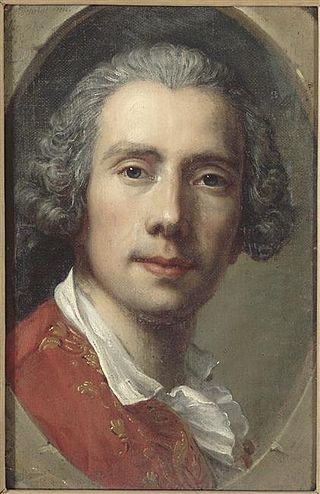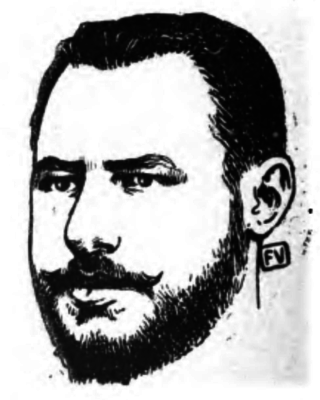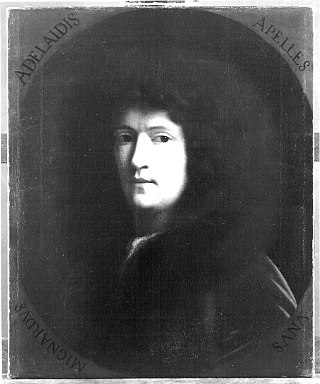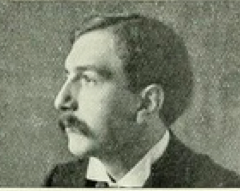
Louis-Sébastien Mercier was a French dramatist and writer, whose 1771 novel L'An 2440 is an example of proto-science fiction.

François Pascal Simon Gérard, titled as Baron Gérard in 1809, was a prominent French painter. He was born in Rome, where his father occupied a post in the house of the French ambassador, and his mother was Italian. After he was made a baron of the Empire in 1809 by Emperor Napoleon, he was known formally as Baron Gérard.

Louis-Jean-François Lagrenée was a French rococo painter and student of Carle van Loo. He won the Grand Prix de Rome for painting in 1749 and was elected a member of the Académie royale de peinture et de sculpture in 1755. His younger brother Jean-Jacques Lagrenée was also a painter.

Tristan Klingsor, birth name Léon Leclère, was a French poet, musician, painter and art critic, best known for his artistic association with the composer Maurice Ravel.

Aimé Nicolas Morot was a French painter and sculptor in the Academic Art style.

René-Antoine Houasse was a decorative French painter.
The Académie de Saint-Luc was the guild of painters and sculptors set up in Paris in 1391, and dissolved in 1776.

Merry-Joseph Blondel was a French history painter of the Neoclassical school. He was a winner of the prestigious Prix de Rome in 1803. After the salon of 1824, he was bestowed with the rank of Knight in the order of the Legion d'Honneur by Charles X of France and offered a professorship at the École nationale supérieure des Beaux-Arts: a position in which he remained until his death in 1853. In 1832, he was elected to a seat at the Académie des Beaux-Arts in Paris.

René-Paul Schützenberger was a French Post-Impressionist painter.

Guillaume Voiriot was a French portrait painter.
Henri Testelin (1616–1695) was a French painter and writer on art.

André Fontainas (1865–1948) was a Belgian Symbolist poet and critic. He was born in Brussels. He spent much of his life in France. He taught at Lycee Fontaines. He was a member of the Académie Mallarmé.

Marcel-André Baschet was a French portrait painter, notable for his numerous portraits of the Presidents of the French Third Republic.

Jacques-Nicolas Tardieu, called "Tardieu fils" or "Tardieu the younger", was a French engraver.

Louis Monziès was a French painter and etcher. He was the curator of the three Museums of Le Mans for 10 years until his death.

Paul Biva was a French painter. His paintings, both Realist, Naturalist in effect, principally represented intricate landscape paintings or elaborate flower settings, much as the work of his older brother, the artist Henri Biva (1848–1929). Paul Biva was a distinguished member of National Horticultural Society of France from 1898 until his untimely death two years later.

Jeanne-Henriette Tirman was a French woman painter and printmaker.

Paul Mignard was a French painter and etcher. Born into an important artistic family with its origins in Troyes, he is known mainly as a portrait painter.

Marie Gabriel Mourey was a French novelist, essayist, poet, playwright, translator and art critic.

Pierre-François Laurent (1739-1809) was an engraver and co-director with Louis-Nicolas-Joseph Robillard de Péronville of the publication Le Musée français. As an engraver, he specialised in landscapes and genre subjects after Dutch artists. He also produced several engravings of subjects from the recent national history.



















